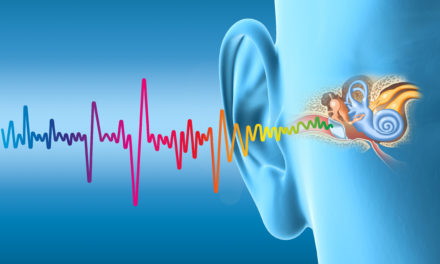What are the different types and causes of hearing loss?
Written by Laura Abdulnour,
Audiologist

They are three main types of hearing loss
- Sensorineural
- Conductive
- Mixed
Sensorineural Hearing Loss
Sensorineural hearing loss is characterized by the inability of the nerve impulses to reach the brain. This hearing loss is permanent and can be caused by cell damage inside the cochlea or by upper auditory difficulties. This condition can not be treated medically or surgically and in most cases, hearing aids or other hearing devices are used to adapt to hearing difficulties caused by sensorineural hearing loss.
The conditions most commonly associated with sensorineural hearing loss are described below:
Hearing loss caused by aging (presbycusis)
Age-related hearing loss is known as presbycusis. Apart from hereditary reasons, it is the most common permanent sensorineural deafness. Presbycusis affects the nerve cells in the cochlea due to aging. High pitch sounds are the most affected by this form of disability, people with presbycusis have trouble hearing consonants, understanding speech in the presence of background noise and hearing high-pitched sounds such as birds singing. Age-related hearing loss is often accompanied by tinnitus. By maintaining good habits, it is possible to reduce the risks of developing a hearing loss.
Noise-induced hearing loss
Noise induced hearing loss is triggered by exposure to loud noises. People exposed to excessive noise for long periods of time can develop this permanent sensorineural deafness. Listening to music too loud and riding a motorcycle without hearing protection are frequent causes of noise-induced hearing loss. When noise-induced hearing loss is the result of excessive noise exposure in the work environment it will be referred to as occupational hearing loss. In Quebec, people with occupational hearing loss can benefit from support programs offered by the CNESST. Noise-induced hearing loss can also be triggered by sudden, extremely loud sounds, such as a gunshot. Individuals of all ages can be affected by this form of hearing loss which is often accompanied by tinnitus. Just like age-related hearing loss, this disability has more impact on high pitched sounds. Counter to lots of other types of hearing loss, noise-induced hearing loss can be avoided by wearing adequate hearing protection or by eliminating the noise at its source.
Congenital hearing loss
Congenital hearing loss refers to a hearing loss present since birth. It can be caused by genetic or non-genetic factors. Genetic hearing loss is the most frequent type of hearing loss. This inherited disability can be triggered at birth or develop later in life. A premature birth and lack of oxygen at birth are non-genetic factors that can cause congenital hearing loss. Likewise, complications during pregnancy such as maternal viral infections, consumption of toxins and maternal diabetes can cause this disability. Systematic newborn screening programs for hearing loss are developing nationally to identify hearing loss as soon as possible. Early detection of congenital hearing loss will lead to early intervention that will increase the chances of normal speech development and social development.
Ménière’s disease
Ménière’s disease is a pathology of the inner ear that affects hearing and balance. Fluctuant hearing loss is often accompanied by tinnitus and vertigo. People suffering with Ménière’s disease can have a feeling of fullness in their ears. Vertigo attacks can happen suddenly and last over 15 minutes. We think that this disease is provoked by excess liquid in the inner ear and the treatment options often include changing eating habits. An ENT doctor should be consulted if the symptoms described are experienced.
Sudden hearing loss
Sudden hearing loss is a rapid deterioration in hearing that can continue to decline for three consecutive days. In most cases, sudden hearing loss is observed in only one ear. Ototoxic medication is a frequent cause of sudden hearing loss. In this case, the handicap can be accompanied by tinnitus and vertigo. Sudden hearing loss must be treated as an emergency and a doctor should be consulted quickly. The doctor will examine the reasons for the hearing loss and prescribe a treatment if possible. A sudden loss of hearing can be treated with steroids or antibiotics for certain cases caused by infections. An appointment with an audiologist and the ENT doctor is important for treating sudden hearing loss.
Acoustic neurom
Acoustic neuroma is a non cancerous tumor on the auditory nerve. This is the nerve that carries nerve impulses from the cochlea to the brain. This tumor will provoke a sensorineural hearing loss and generally affects only one ear. The acoustic neuroma is often accompanied by tinnitus and vertigo. The treatment to this rare pathology requires a collaborative approach from a medical team that includes the expertise of a neurosurgeon and an ENT doctor. Surgery is a treatment alternative.

Conductive Hearing Loss
Conductive hearing loss is generally temporary and can often be treated medically or surgically by a specialist. It is caused by outer ear dysfunctions that prevent sound waves traveling through the air to reach the inner ear.
Hearing aids can be used while waiting for a medical intervention or as an alternative option to the treatment.
Middle ear infection (otitis media)
Ear infections are also known as otitis media. Otitis media is a middle ear infection that provokes an accumulation of liquid behind the ear-drum, which limits the movement of the mechanical ear chain. Lack of ear-drum mobility and ossicles causes conductive hearing loss, as sound waves are not transformed into amplified vibrations as they should. Otitis media can be treated with antibiotics. In cases where the infection persists or happens frequently, an ENT doctor can perform a small procedure called a myringotomy. A myringotomy is a simple surgical procedure to create a hole in the ear-drum to insert a ventilation tube to allow the fluid trapped inside the middle ear to drain out. Once the tube is inserted, it will allow normal hearing acuity and can stay in place for 3 to 12 months. Otitis media is more frequent at a young age and can have an impact on language development. Bone conduction hearing aids can be used to overcome difficulties caused by a middle ear infection. When wearing hearing aids, sound waves reach the cochlea directly via the temporal bone. Therefore, the conductive hearing loss will have no effect on the person’s ability to hear sounds. Wearing traditional hearing aids is not recommended for middle ear infections.
Ear-drum perforation
The perforation of the ear-drum may be the result of a head trauma, a middle ear infection, or the inability to heal after a fall of a ventilation tube. Ear-drum perforation causes a temporary conductive hearing loss. It is imperative to avoid water in the ears when you have a perforated eardrum. Water making its way into the middle ear can cause chronic ear infections and prevent the perforated eardrum from healing. To avoid water making its way into the middle ear, audiologists recommend using hearing protection while swimming or in the shower and bath. In most cases, an ear-drum perforation can heal itself, but in other cases it requires a medical intervention. An ENT doctor can perform a surgical intervention called tympanoplasty to repair a perforated ear-drum.
Otosclerosis
Otosclerosis is a progressive disease that results in immobilization of the stapes, the third bone in the ossicles. This state is considered hereditary and can be associated with tinnitus and vertigo. It can be treated by using hearing aids to overcome difficulties caused by hearing loss or undergoing a stapedectomy. The stapedectomy is a surgical intervention performed by an ENT doctor to replace the stapes by a hearing aid.
Ossicular discontinuity
The ossicles have an important role in the transmission of sound waves from the outer ear to the inner ear. The ear-drum is attached to the malleus, the malleus is connected to the incus that is attached to the stapes. When a person has had multiple middle ear infections, a cholesteatoma or head trauma, the joint between these fragile bones can separate. The resulting ossicular discontinuity causes conductive hearing loss often accompanied by tinnitus. This conductive hearing loss can be treated with hearing aids that amplify incoming sounds and balance the gaps caused by the discontinuity. Otherwise, a surgical intervention can be performed by an ENT doctor to reconstitute the chain of ossicles.
Cholesteatoma
Cholesteatoma is a condition where dead skin is produced in the middle ear and forms a cyst behind the eardrum. In addition to ear pains and tinnitus, the cholesteatoma can also cause erosion of the ossicles, chronic middle ear infections and ear-drum perforation. This state needs a surgical intervention performed by an ENT doctor to remove the middle ear mass.
External ear infection (otitis externa)
The external ear infection is also known under the name otitis externa. It’s an inflammation of the auditory canal provoked by a bacterial infection. This state is often the result of water that stayed in the ears after swimming. Otitis externa appears suddenly and can aggravate quickly. The external auditory canal becomes red and the person can feel pain in the ears and high sensitivity in the infected area. This infection can cause pus to flow into the ear canal. A quick treatment with drops is essential to avoid any complications.
Cerumen blocking
Cerumen or earwax is a natural secretion from the glands in the external auditory canal which helps keep the ear clean and protected. In certain narrow auditory canals or when the cerumen is less lubricating, a plug can form and this causes conductive deafness. Cerumen plugs should not be removed with Q-tips, because it removes natural lubricants in the ear and can push the earwax further in the auditory canal. You must use natural oils or softening products made with carbamide peroxide to facilitate earwax extraction. If this does not help, the cerumen must be removed by a health professional.
Ear atresia
Ear atresia is a congenital disease where the outer ear did not develop normally at birth. After a hearing test, hearing health professionals will be able to know if it’s a conductive hearing loss or a mixed loss. A hearing aid anchored in the bone can be used in cases where the hearing loss caused by atresia is conductive, in order to ensure the adequate development of language.

Mixed hearing loss
It is hearing loss caused by a combination of both conductive hearing loss and sensorineural hearing loss. Head trauma is the most common cause of mixed hearing loss. This loss can also be present from birth (congenital)
Head trauma
A head injury can damage the delicate structures of the middle ear and the inner ear. Head trauma can therefore lead to temporary or permanent hearing loss and may be accompanied by tinnitus. If damage is suffered in the middle ear, conductive deafness can be repaired by an ENT doctor. In cases where the sensorineural hearing loss is permanent, hearing aids can be used to adapt to hearing difficulties.

If you have questions, don’t hesitate to contact a professional from the ODYO team!

 1.800.909.ODYO
1.800.909.ODYO support@odyo.ca
support@odyo.ca Online
Online  Shop
Shop  Blog
Blog 








